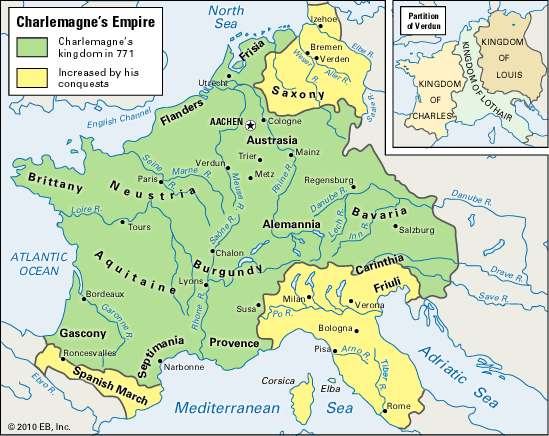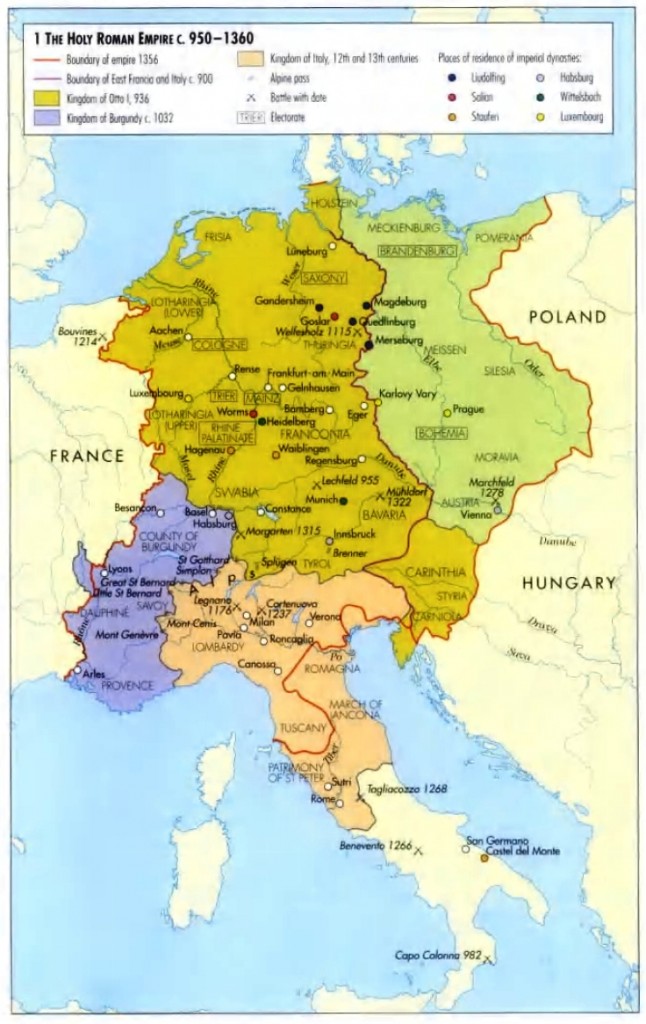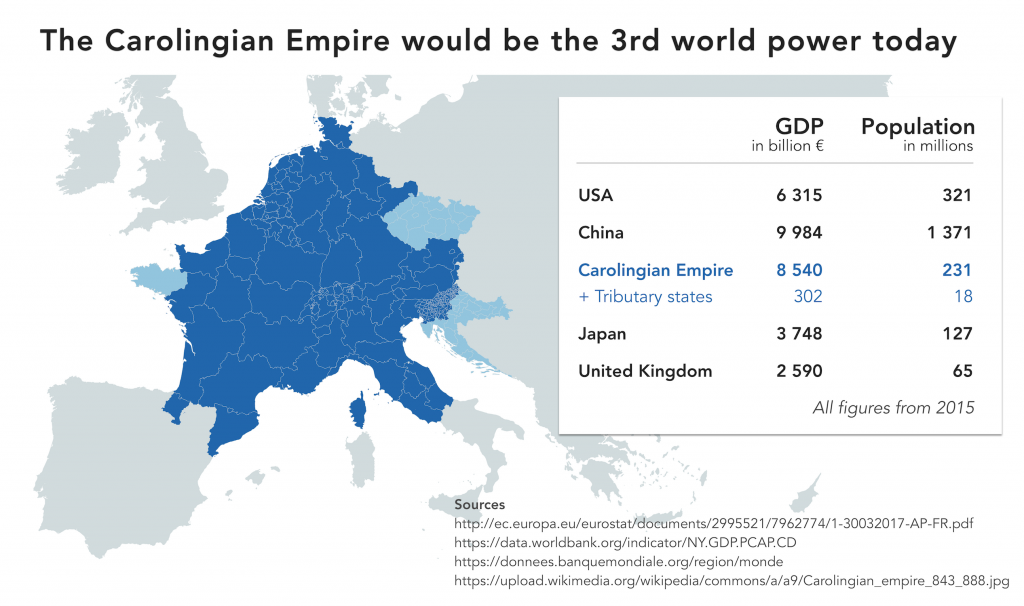The Third Great European Transformation: North Sea
“‘Rather than focus on why Europe diverged from the rest in 1800 we should be asking why the North Sea diverged from the rest in 1000.‘–H.B.D.C.
“By 1200 Western Europe has a GDP per capita higher than most parts of the world, but (with two exceptions) by 1500 this number stops increasing. In both data sets, the two exceptions are the Netherlands and Great Britain. These North Sea economies experienced sustained GDP per capita growth for six straight centuries. The North Sea begins to diverge from the rest of Europe long before the ‘West’ begins its more famous split from ‘the rest.’
“We can pinpoint the beginning of this ‘little divergence’ with greater detail. In 1348 Holland’s GDP per capita was $876. England’s was $777. In less than 60 years time Holland’s jumps to $1,245 and England’s to 1090. The North Sea’s revolutionary divergence started at this time.”
The Ability To Scale Organizations
The Restoration of Aristotle
The Plague
The Reformation
one of the biggest targets of the reformation in Germany — one that, unlike the indulgences, etc., you don’t normally hear much about — is that the reformers wanted to take back control of marriage and marriage regulations from the central church. apart from the cousin marriage bans, another huge change that the roman catholic church had made to marriage in the middle ages was to make a marriage valid only if the man and woman involved freely agreed to be married to one another. the church, in other words, had taken marriage out of the hands of parents who were no longer supposed to engage in arranging marriages for their children. the choice was to be freely made by the couple, no approval was necessary from the family, and, up until the 1500s, you didn’t even have to get married by a priest — two adults (a man and a woman) could just promise themselves in marriage to one another, even without witnesses, and that was enough. (one might always be disowned and disinherited, of course, if your parents didn’t approve, but they could not legally stop you from marrying.)
the germans reversed this after the reformation, and put marriage back in the hands of parents — at least they had to give their approval from then on. the reformers also reversed the cousin marriage bans, although curiously the rates of cousin marriage do not appear to have increased substantially afterward.
The Separation by Eugenic Evolution
The combination of the restoration of Aristotle, the construction of northern trade under the Vikings then the Hanseatic league, the expansionary financial system of the Saxons (the European equivalent of today’s jews), the printing press, the Muslim blockade of Europeans giving birth to the age of sail, northern Europeans lost their tolerance for the corruption, taxation, and foreign influence of the church in the third great revolt against the church’s corruption.
As a consequence, Europe had passed through a series of long wars to separate the dysgenic south from the eugenic north. (A problem northern and southern Italy still refuse to face. Southern Italy is the Mexico of North America, and economically indifferent from Greece, with whom they are genetically related. Italians, after all, were Aryans not neolithic farmers. Greece southern Italy and the islands remain the children of neolithic farmers, and a long tradition of minor population exchange around the Mediterranean.)
These wars were largely eugenic, germanic, elements of the Holy Roman Empire – meaning the vast territory of central Europe.
 The maximum extent of the Carolingian Empire
The maximum extent of the Carolingian Empire
 The Treaty of Verdun
The Treaty of Verdun

The Micro States of a Civilization Versus the Nation States that Break It.
Europe consists of the Carolingian empire of the territorial states of the greater germanic peoples, and the Scandinavian naval states to the north. With its original capitol city (seat) in Aachen (Aken), the Carolingian empire would be the third world power today – and without napoleon’s conquest, still maintain itself as a collection of small states (like Switzerland for example) – which is the design that the founders wisely put in place in the United States.
We are indoctrinated into the normalizing the paradigm of the strong Napoleonic state, but Europe was unified in resistance to the catholic french attempt to conquer the protestant germanic core of Europe. when it was the market for small states that created the continuous competition and evolution of European civilization despite the attempt of the church to recreate byzantine, Semitic, Egyptian ambitions of religious rule. Instead, small states the military aristocracy, and the common law tradition formed a natural competition between the aristocracy, the law, and the church – a tradition that is uniquely European.
The only value of scale is war, trade negotiation, and debt. And while war, trade manipulation, and debt expansion can provide short term military and economic advantage in defense, all three converts into an external dependency creating vulnerability in the long term. And States like businesses and households are happy to seek to maintain a short term advantage until it evolves into a long term vulnerability (fragility).

The Germanic Expansion
The German Eastern Settlement saw migration and chartering of settlement structures by ethnic Germans of the Holy Roman Empire into less-populated territories, however, already inhabited by Slavs and Balts east of the Saale and Elbe rivers, primarily the southern and western regions of Eastern Europe and the Baltics. The area of colonization stretched from Estonia at the Baltic coast in the north, via the territories that conform to modern Poland and Silesia, further into Bohemia and Slovenia, Hungary, and extended south-east into Transylvania (today in Romania). The Ostsiedlung took place along the roughly 1,000 km (620 mi) long eastern territorial border of the Empire and the State of the Teutonic Order. The old term Deutsche Ostkolonisation (German Colonization of the East), which was often used in the past, has been discontinued since the middle of the 20th century due to its linguistic proximity to modern colonialism.
Central and Eastern European societies underwent various changes in culture, religion, law and administration, agriculture, demography (settlement numbers and structures) during the period of German eastward expansion. Starting in the 1980s, modern historians have interpreted the Ostsiedlung as an element of the process, called Hochmittelalterlicher Landesausbau (High Middle Age Land Consolidation), a pan-European intensification process from the Carolingian-Anglo-Saxon core countries to the periphery of the continent. Contemporary documents do not contain ideas of long-term imperial policies towards organized colonization, neither was there a discernible linear settlement process as immigration took place in many individual efforts and stages, often settlers were encouraged by the Slavic regional lords.[4][5]
The ethnic patchwork of 12th and 13th century Central and Eastern Europe was complex as the total numbers of settlers were rather low and, depending on who locally held a numerical majority, populations usually assimilated into each other. Contingents of immigrants were first documented during the High Middle Ages in the mid 12th century, and it ended at the beginning of the 14th century. The ethnic, cultural, linguistic and religious as well as economic changes caused by the German Eastern settlement had a profound influence on the history of Eastern Central Europe between the Baltic Sea and the Carpathians until the 20th century
The Polonization (“Polishification”) process of Germans who had settled since the 13th century in Poland, in towns like Kraków (Krakau, Cracow) and Pozna? (Posen) in the midst of Polish lands, lasted about two centuries. They constituted a patriciate(nobility) that was not able to continue its isolated position without a continuation of newcomers from German lands. The Sorbs over time also assimilated German settlers in their midst, yet at the same time, other Sorbs were themselves assimilated by the surrounding German-speaking population. Many Central and Eastern European towns remained for some centuries multi-ethnic melting pots.
The Italian Rennaisance
The British Empirical Revolution
The Enlightenment as a Revolution Against Anglo Empiricism
The Divergence of Anglo Germanic and Germanic
And by enfranchising the Ashkenazi, at the same time as falsifying the church …
Tri-Functionalism: Military State, Law, and Religion
This competition between masculine (martial hierarchical) and (feminine (social-constrictive equalitarian) elites is possible because only Europeans and Ashkenazi reside in the outlier among civilizations – European civilization – that, because of our first principle of self-determination by self-determined means, and markets in all aspects of life, allows a market for elites, and elite language, logic, and grammar, mediated by empirical law, producing specializations in elites we call Tri-Partism and Tri-Functionalism ((a)War-Technology-Science, (b)Law-Reason-Empiricism, (c) Philosophy-Faith-Empathy).
So within European civilization – at least Pre and Post Christianity – we tolerate argumentative political competition between the three sets of elites, because our law is limited to disputes over the material, and competition between elites to undermining our law and order.
While our ancestral pagan religion was Political, Archetypal, Military and heroic, and the Heathan Religion of the hearth and home left for women and the underclasses, there was no religion of social status for women and underclasses, except the service of that martial and pagan political religion. And as urbanization increased, the population increased, trade increased, the vast size and complexity of the empire increased, and power distance increased, the alienation of women, underclasses, immigrants, and slaves increased, even more so than between the technological(formal) and non-technological(informal) classes today.
This Vacuum – the need to restore membership and sedate alienation – was filled by a host of mystical cults until Christianity provided a status hierarchy and political organization to compete with the military. And Christianity was cheap – it required no achievements, no investments, no costs other than empathy, kindness, adherence to supernatural faith, ritual, and dogma in exchange for membership in a clan that provided empathy and community for the alienated, and new elites specializing in their interests.
Had Christianity evolved as were the other pagan cults, as a religion of the underclasses and women, then
Unfortunately, because the Jewish strategy intuits the feminine instinct of tribe, consensus building, socialism and relies on the female strategy of undermining by fomenting resentment, we have been, like all civilizations that have cast out the jews, too tolerant, because we are equally tolerant of our women for evolutionary reasons, but we are only organized to resist male warfare by male means of force, and too Christian in our .. of the poor.
women and jews and immigrants from the third world at the same time
(continue story)
—Man was not oppressed. He was a violent, pragmatic, hyper consumptive, hyperproductive, hyper adaptive, ecologically devastating, superpredator, that was incrementally domesticated by taking over the dominance hierarchy like every other domesticated animal and regulating his behavior and reproduction, and that domestication was judge by selection for increasing participation in a productive division of labor.—